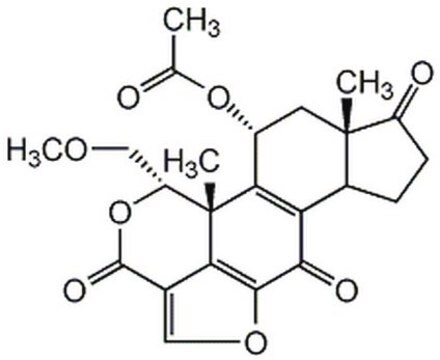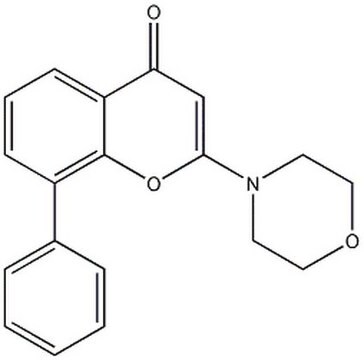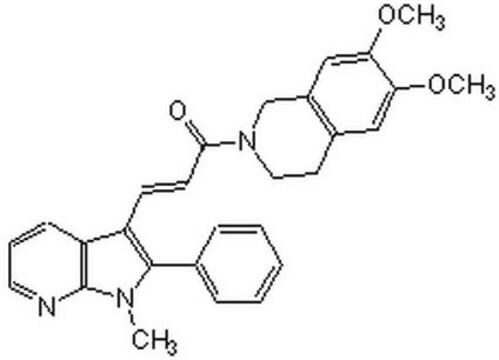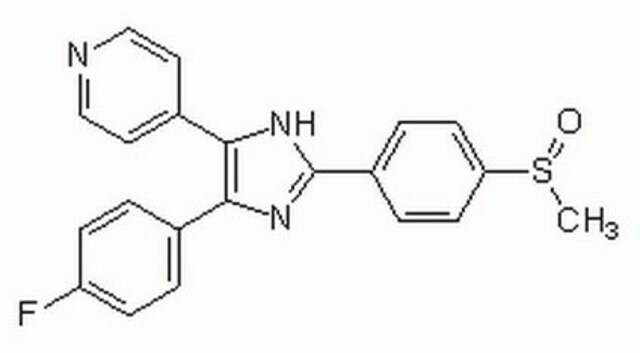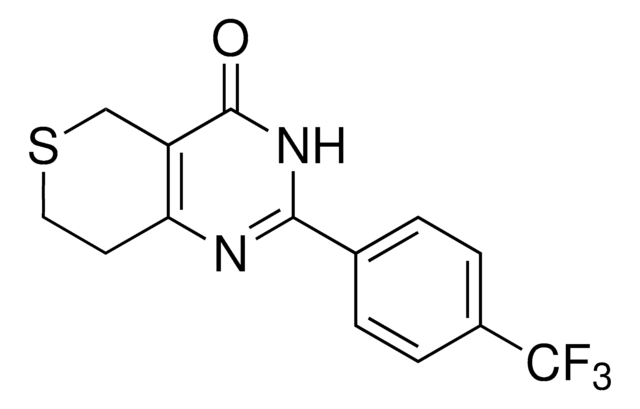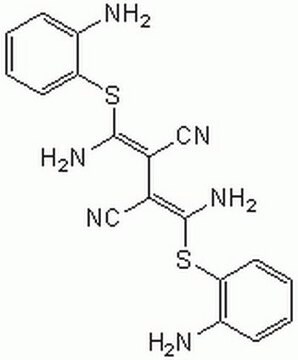440202
LY 294002
≥98% (HPLC), solid, PI3K inhibitor, Calbiochem®
Synonyme(s) :
LY 294002, 2-(4-Morpholinyl)-8-phenyl-4H-1-benzopyran-4-one, BRD2 Inhibitor IV, BRD3 Inhibitor III, BRD4 Inhibitor IV
About This Item
Produits recommandés
product name
LY 294002, LY294002, CAS 154447-36-6, is a cell-permeable, potent, reversible, and specific inhibitor of PI 3-kinase ((IC₅₀ = 1.4 µM). Acts on the ATP-binding site.
Niveau de qualité
Pureté
≥98% (HPLC)
Forme
solid
Fabricant/nom de marque
Calbiochem®
Conditions de stockage
OK to freeze
protect from light
Couleur
off-white
Solubilité
DMSO: 20 mg/mL
ethanol: soluble
Conditions d'expédition
ambient
Température de stockage
−20°C
InChI
1S/C19H17NO3/c21-17-13-18(20-9-11-22-12-10-20)23-19-15(7-4-8-16(17)19)14-5-2-1-3-6-14/h1-8,13H,9-12H2
Clé InChI
CZQHHVNHHHRRDU-UHFFFAOYSA-N
Description générale
Actions biochimiques/physiologiques
Phosphatidylinositol 3-kinase
Avertissement
Notes préparatoires
Reconstitution
Autres remarques
Bechard, M., and Dalton. S. 2009. Mol. Cell. Biol.29, 2092.
Lianguzova, M.S. et al. 2007. Cell Biol. Int.31, 330.
Baumann, P., and West, S.C. 1998. Proc. Natl. Acad. Sci. USA 95, 14066.
Cardone, M.H., et al. 1998. Science282, 1318.
Vlahos, C.J., et al. 1995. J. Immunol.154, 2413.
Yano, H., et al. 1995. Biochem. J.312, 145.
Vlahos, C.J., et al. 1994. J. Biol. Chem.269, 5241.
Selected Citations
Lee, J., et al. 2009. Cell Stem Cell5, 76.
Informations légales
Code de la classe de stockage
11 - Combustible Solids
Classe de danger pour l'eau (WGK)
WGK 2
Point d'éclair (°F)
487.4 °F
Point d'éclair (°C)
253.0 °C
Certificats d'analyse (COA)
Recherchez un Certificats d'analyse (COA) en saisissant le numéro de lot du produit. Les numéros de lot figurent sur l'étiquette du produit après les mots "Lot" ou "Batch".
Déjà en possession de ce produit ?
Retrouvez la documentation relative aux produits que vous avez récemment achetés dans la Bibliothèque de documents.
Les clients ont également consulté
Notre équipe de scientifiques dispose d'une expérience dans tous les secteurs de la recherche, notamment en sciences de la vie, science des matériaux, synthèse chimique, chromatographie, analyse et dans de nombreux autres domaines..
Contacter notre Service technique


